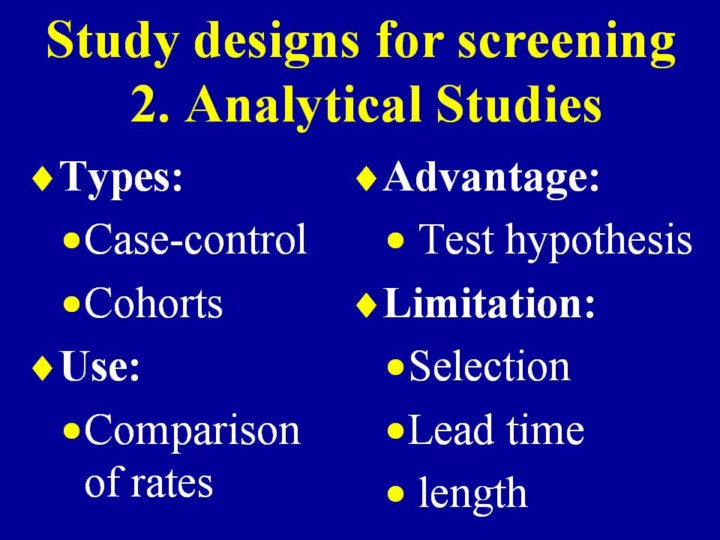| front |1 |2 |3 |4 |5 |6 |7 |8 |9 |10 |11 |12 |13 |14 |15 |16 |17 |18 |19 |20 |21 |review |
 |
Observational analytical studies, both case-control and cohort are often used to evaluate a screening program. In case-control design individuals with or without the disease are compared with respect to their past exposure to screening. However, as with any case-control study, the definition and selection of cases and controls are important for the validity of the findings. Using a cohort design, a case-fatality rate of those who chose to be screened is compared with the comparable rate among those whose diagnoses were symptom-related. This is the most frequently used approach for the evaluation of a screening program but in interpreting the results, the potential effects of self-selection of participants, lead time and length bias must be taken in consideration. |